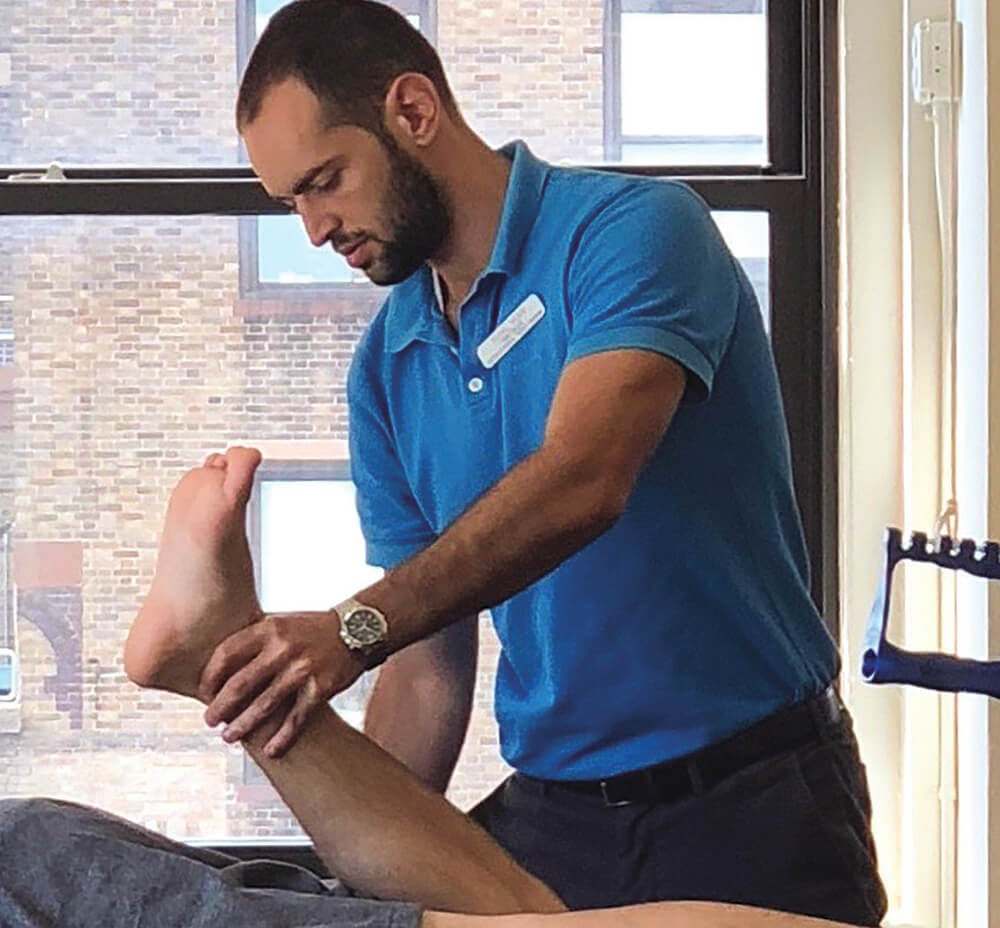The Magic Touch
Physical Therapist Yuval Yaari Goes Beyond Traditional Hands-On Methods of Therapy

Yuval Yaari’s new patient arrived 45 minutes early. The woman was in her early 30s and pacing back and forth in the waiting area. “It seemed like her pain was keeping her from sitting,” recalls Yaari, a physical therapist with NYU Langone Occupational and Industrial Orthopedic Center and graduate of the Touro College School of Health Sciences (SHS) Doctor of Physical Therapy Program. Yaari questioned the woman about her pain and injury and learned that she’d hurt her lower back six months earlier lifting her child out of a swimming pool. She’d undergone a range of treatments, including two injections into her spine that hadn’t helped. When Yaari started the physical part of the exam and asked her to bend over, the patient refused and then burst into tears.
“With that reaction, she gave me a clue about her level of stress,” explains Yaari. He asked more questions. Prior to her injury, she’d been very fit, but now doctors had told her she’d “slipped a disc” and shouldn’t bend over. “That explained her military posture,” he said, and why she’d spent the past months afraid to lift her children, work out in the gym, sit on a couch or even a chair at a hair salon. “All she saw was pain,” Yaari recalls.
Brains and Pain
Explains Shira Weiner, Ph.D., professor in the physical therapy (PT) program at SHS, “We experience pain in our brain and our brain decides how it wants to read that signal.” For example, a physical therapist can ask one patient about their pain and learn that on a scale of one to ten it registers as a six, but the person barely notices it because he or she is at work; another patient will say that their pain is a three and they cannot cope.
“There is a lot of fear associated with pain. Often, this fear stops patients from doing things and can perpetuate the problem,” explains Professor Weiner. “At Touro, we teach our students to take the time to understand the reason a patient is in pain and to acknowledge and address a patient’s fears and provide them with alternatives so they can continue activity that will promote healing.”
Alternative Therapies
At Touro, in conjunction with the traditional PT curriculum, students learn alternative therapies and approaches such as deep breathing, relaxation exercises, mindfulness and guided imagery. In addition, students are taught ways to help patients reframe their understanding of what’s happening in their bodies and what to expect from their pain.
Yaari knew brain training, reframing and encouraging positive movement could help his patient. The first step was to have the woman lie down and curl into a ball. “This showed her that she could bend her back without pain.” Then he asked an unusual question. “When you see people bend over do you feel pain?” The patient answered, “Yes.”
Desensitization Through Brain Training
For the patient to handle the movement component of therapy sessions, which included lunges, squats, extensions and flexions of her back, she needed to be less afraid of spinal motion. To help desensitize her, Yaari asked her to read magazines, circle photos of people bending their backs and to make a note, without judgement, if they were flexing or extending their backs, which helped to diffuse some of her fear. Every session, in conjunction with back strengthening exercises, Yaari introduced new brain retraining exercises that would help to further desensitize her. These included: having her daughter spell out words on her back with her finger, so she could grow accustomed to someone touching her back; sitting on a bar stool while on a date with her husband; and pushing a stroller.
During the three months Yaari’s patient received treatment, the woman reclaimed her resilience, learned ways of working and functioning with her injury and was able to reduce the severity of the pain she felt. “I helped the patient to see herself as a resilient and strong person, not someone who was broken and needing fixing.”

